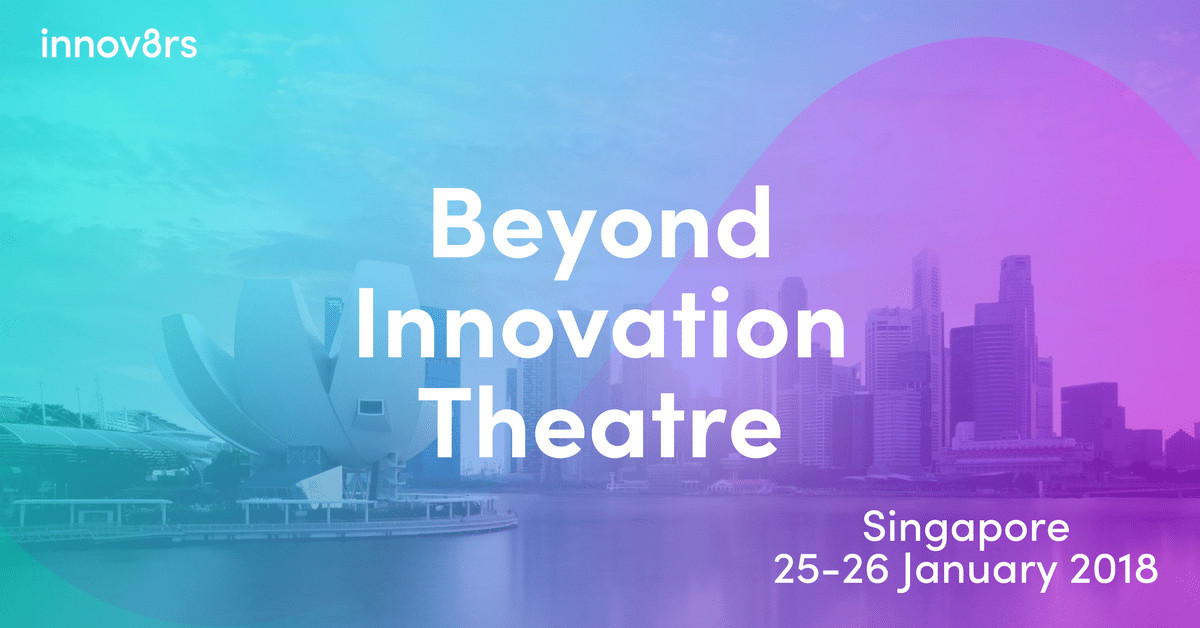Innovation is not a linear process.
It comes up against barriers, mistakes and accidents, for which big companies often don’t have much tolerance.
“People in companies have to fight for resources through several layers of management, and then finally, somebody at the top says ‘we’re going to invest’, or ‘we’re not going to invest’,” management guru Gary Hamel once said.
Obviously a lot is being said about most corporate structures being out-dated for the current ever-changing economic landscape. Yet at this very moment, thousands of intrapreneurs are fighting that battle for resources – knowing they can’t change the system overnight.
We asked 5 intrapreneurs featured on stage during #Innov8rs Singapore to share their best advice about engaging their sponsors.

Roland Liew, HP
First of all, it’s important for intrapreneurs to really understand your company’s strategic directions and goals. Your ideas will have a much better chance of moving forward if you are able to tie it back to them. My approach is a bottom’s up approach in getting projects off the ground. I don’t wait for senior management to point to what need to be done. As you are closer to the ground, you are in a much better position to see what is missing from the market and propose solution on how to solve them.
The biggest impact is to get the right stakeholder’s support that is passionate about the project. Without him or her, your project will be “eaten” alive by other department’s competing priorities.
In current business environment, financial and human resources are scarce commodity that have to be repeatedly earned or justified.
So, you need strong executive sponsors to help you fight for those resources in the regular “boardroom battles”. Find a good one and they will help clear a path for you. Get a bad one, your life will be a nightmare.
Intrapreneurs often focuses their time and energy around the project. But being connected to and helping to connect senior stakeholders are also just as vital.

Vegard Aas, Telenor
My best piece of advise is to celebrate and communicate early successes to ensure continued management buy-in.
Even if your programs have good traction and supportive stakeholders, keep communicating the value and showcase the success stories as much and broadly as you can.
The great traction and ~5 million dollars in value created from one of our first winners basically saved our Ignite incubator program when management wanted to shut it down.
 Michael Balint, former Commonwealth Bank of Australia
Michael Balint, former Commonwealth Bank of Australia
In a large company, engaged senior sponsors are key to realizing your innovation objectives. Where possible, get your sponsors engaged sooner rather than later. To engage your senior sponsors, outline to them the case for change and the long-term vision of the new product or service.
When you do this, ensure that your innovation aligns to the strategy that the senior sponsors are responsible for delivering.
This will assist them to “see” your innovation in their context of their BAU and how it might enhance delivery of overall service / product offering.

Audrey Huah, Dentsu Aegis
We successfully delivered three platforms at different software lifecycle stages and I can tell you, it was a journey of ups and downs. We set out to build something new with a new business model, and we succeeded.
Ultimately, the biggest impact on results was the tenacity and creativity of the team I had to make things happen. In the midst of naysayers and detractors, it all came down to the tenacity of the team to make things happen that did. Even in the age of machine learning, artificial intelligence and robots, the tenacity of the human spirit to succeed can never be discounted.

May Seow, Facebook
Coming up with a new and potentially better way to deliver on an experience or efficiency is actually not as big a challenge as getting buy-in—especially within a large organization where the concept of pivot or change is reserved for the selected few.
Identify your stakeholders or influencers early and include them in the foundation of your thinking. Build a prototype and test. It can be hacky but make the idea tangible enough to get a reaction and push it to alpha. Start small, start somewhere.
Hear real-life and first-hand stories of success and failure from 20+ intrapreneurs during #Innov8rs Singapore.
By now, most companies are running some type of innovation program to launch new products and services, bring in new skills and mindsets and change the company culture. Not all efforts are leading to the desired results. During #Innov8rs Singapore, we’ll focus on getting actual results from your innovation program – beyond just playing innovation theatre.


